Country guides

Things to do in Cuba
Cuba is a country like no other, with Havana's charming colonial architecture and revolutionary artefacts infused with communist iconography. It's a vibrant, fun and unique holiday destination, with strolls around the streets or along beaches entertainment enough for most visitors. However, there are plenty of cultural and historical sites in Cuba for those who enjoy more traditional sightseeing, such as the Museo de la Revolucion, the Capitolio Nacional and the Museo Nacional de Bellas Artes.
Then there are the fabulous beaches, largely free of the rampant resort development elsewhere in the Caribbean. And the beaches are not the only natural wonders, with the countryside boasting a wealth of natural splendour and interesting attractions, such as the sugarcane palaces of Trinidad and the colonial city of Sancti Spiritus.
Cuba is also developing its potential for ecotourism through stunning natural regions such as the Montemar Natural Park, which is made up of forests, marshes and beautifully clear lagoons. The cave systems of Gran Caverna de Santo Tomas are also pleasantly unspoilt, allowing for a more authentic caving experience than many of the glitzy tourist-orientated caves found on the international circuit.
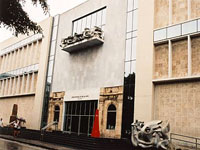
Museo Nacional de Bellas Artes
The Bellas Artes Museum was founded in 1913 and is split into two buildings, one housing international art and the other Cuban art. Both collections should delight any visitor who …
Museo Nacional de Bellas Artes
The Bellas Artes Museum was founded in 1913 and is split into two buildings, one housing international art and the other Cuban art. Both collections should delight any visitor who has an interest in art. The Colección de Arte Universal covers everything from ancient Greek artefacts and Latin American pieces to art by French, Dutch and Italian painters, while the Colección de Arte Cubano contains works from the 16th to the 20th centuries by prominent Cuban artists.
The latter galleries have rooms dedicated to religion, landscape, portraits and scenes from everyday Cuban life. Artwork by Gainsborough, Goya and Rubens are all featured, while the contemporary section includes Gitana Tropical by Victor Manuel Garcia and El Rapto de las Mulatas by Carlos Enriquez.
Address Corner of Calle Trocadero (between Calles Zulueta and Monserrate) and Calle San Rafael (between Calles Zulueta and Monserrate)
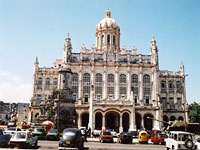
Museo de la Revolución
Formerly the Presidential Palace and headquarters of the Cuban government, this impressive building now houses documents, photographs and artefacts pertaining to the Cuban Revoluti…
Museo de la Revolución
Formerly the Presidential Palace and headquarters of the Cuban government, this impressive building now houses documents, photographs and artefacts pertaining to the Cuban Revolution. The museum provides an excellent introduction to Cuba's struggle for independence, such as the striking displays of blood-stained and bullet-riddled uniforms, and exhibits of life under Spanish colonisation.
In front of the museum entrance stands a watchtower that was part of the old city walls, as well as a tank used by Fidel Castro during the Invasion of the Bay of Pigs in 1961. Behind the museum is the glass-encased yacht, the 'Granma', which brought 82 revolutionaries, including Che Guevara and Fidel Castro, from Mexico to set the wheel of revolution in motion.
Address Calle Refugio, between Calle Agramonte and Av de las Misiones, Centro Habana
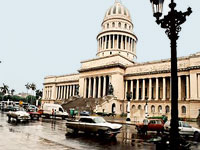
Capitolio Nacional
One of Havana's grandest pieces of architecture, the Capitolio is an important landmark and one of Centro Habana's major sights. A monumental stone stairway leads to the vast domed…
Capitolio Nacional
One of Havana's grandest pieces of architecture, the Capitolio is an important landmark and one of Centro Habana's major sights. A monumental stone stairway leads to the vast domed hall, from where tours will take visitors to elaborately decorated chambers that once housed the seat of Cuban Congress. Today it's home to the National Library and Academy of Sciences, a planetarium and a museum.
Directly beneath the dome lies an imitation 24-carat diamond set into the marble floor, from where all highway distances between Havana and all sites in Cuba are measured. The building is today a bit rundown and the inside is often closed for renovations. Even so, the outside is great for photo opportunities.
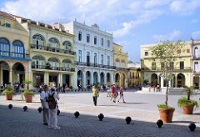
Habana Vieja (Old Havana)
Old Havana (Habana Vieja) is the historic section of Cuba's capital, its ruined defensive walls still attempting to fence in the district. During the years of Prohibition in the Un…
Habana Vieja (Old Havana)
Old Havana (Habana Vieja) is the historic section of Cuba's capital, its ruined defensive walls still attempting to fence in the district. During the years of Prohibition in the United States, it turned into a playground for Americans flocking here for liquor, gambling and hedonism. One of the district's most famous bars is La Bodeguita del Medio, which was the favoured haunt of the legendary US writer Ernest Hemingway. It's cobble-stoned streets are now lined with museums, hotels and restaurants, while striking churches and restored colonial buildings with grand facades surround the picturesque plazas, hosting afternoon chess, domino games and salsa performances.
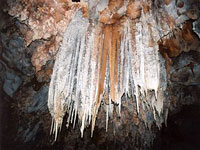
Gran Caverna de Santo Tomás
The Gran Caverna de Santo Tomás are situated about 10 miles (16km) west of Viñales. With more than 29 miles (46km) of underground galleries spanning eight different levels, it's …
Gran Caverna de Santo Tomás
The Gran Caverna de Santo Tomás are situated about 10 miles (16km) west of Viñales. With more than 29 miles (46km) of underground galleries spanning eight different levels, it's Cuba's largest cave system and one of the most important in South America. Fantastical limestone formations, glittering stalactites and stalagmites, underground lakes and vast caverns reveal themselves by the light of headlamps. Amateur spelunkers will probably be limited to just two levels, with entrances to them semi-hidden on a forested slope overlooking the valley and providing wonderful vantage points for views and photographs.
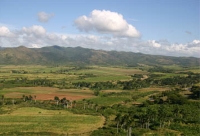
Valle de los Ingenios (Valley of the Sugar Mills)
This emerald valley was once the centre of the sugar industry in Cuba in the 18th and 19th centuries. At its peak, there were over 70 sugarcane mills and about 30,000 slaves workin…
Valle de los Ingenios (Valley of the Sugar Mills)
This emerald valley was once the centre of the sugar industry in Cuba in the 18th and 19th centuries. At its peak, there were over 70 sugarcane mills and about 30,000 slaves working on the plantations. Today, the ruins of estates and mills are visited by tourists attracted by the region's beauty and its historical significance in the slave trade during the valley's boom years. The main site is the Manaca Iznaga, a striking 144ft (44m) high tower which was used by plantation owners to keep watch over slaves. Along with Trinidad, the Valle de los Ingenios has been declared a UNESCO World Heritage Site, and riding tours are a popular way to take in the area's lovely views.
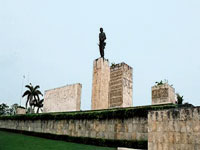
Santa Clara
The city of Santa Clara is best known for the Che Guevara Mausoleum and other monuments relating to the Cuban Revolution. The Tren Blindado marks the spot where Guevara attacked th…
Santa Clara
The city of Santa Clara is best known for the Che Guevara Mausoleum and other monuments relating to the Cuban Revolution. The Tren Blindado marks the spot where Guevara attacked the train carrying Batista's troops and derailed the tracks with a bulldozer. The Mausoleum was built to pay homage to the memory of Guevara and his comrades who fought with him in Bolivia, and the enormous monument incorporates a huge statue of his likeness, as well as representations of many aspects of his revolutionary life. To one side of the statue, a huge stone block has been inscribed in full with his farewell letter to Fidel Castro.
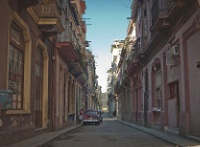
El Malécon
A five-mile (8km) esplanade, roadway and seawall, running between the harbour in Old Havana and the historically Russian area of Vedado, a stroll along El Malécon is the perfect w…
El Malécon
A five-mile (8km) esplanade, roadway and seawall, running between the harbour in Old Havana and the historically Russian area of Vedado, a stroll along El Malécon is the perfect way to start any Havana adventure. The two-hour walk, described by many as a cross-section of Cuban history, begins in Habana Vieja, where the buildings have had their famous pastel colours faded by the sun and the salty sea-wind, and continues past various monuments of struggle heroes such as Máximo Gomez and Calixto García, before ending up in Vedado, a funky downtown district with great sights and vibrant nightlife.
Varadero
The 22 mile (36km) stretch of Varadero Beach has often been referred to as one of the world's most beautiful. Crystal-clear water makes for amazing diving, fishing and snorkelling,…
Varadero
The 22 mile (36km) stretch of Varadero Beach has often been referred to as one of the world's most beautiful. Crystal-clear water makes for amazing diving, fishing and snorkelling, and glass-bottom boat trips are unmissable. Varadero is situated on a spit of land reaching out into the Atlantic, boasting 23 world-renowned dive spots and dive centres providing lessons and equipment. Other attractions include deep sea fishing, windsurfing, parasailing, kayaking and sailing and, for landlubbers, there are a number of restaurants, nightclubs, a skydiving centre, golf courses and more. The hotels in Cuba's most popular beach resort are some of the best in the Caribbean, enjoying close proximity to shopping complexes and artisanal markets.


